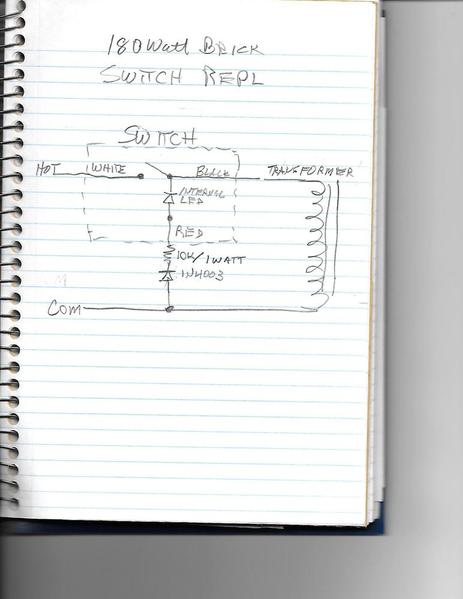The key point in this discussion is above where MOONMAN on 11/4/17 at 6:37 am writes in reply to a question, whether there were differences in the newer 180w PH.
-------------------------------> Quote:
"JIM H, Your #2. yes there differences in the newer versions of 6-22983. I believe there is a color background on the part # now. (Mikado (Mike Reagan) mentioned this at a York Legacy meeting on the forum.There are differences for two reasons. The first is that the PH was tripping faster than the lock-ons that have a breaker and adapt the power plug to a track connector. (The small trackside house lock-on)...
"When Lionel and Jon Z. wanted to redesign the circuitry it was discovered that the drawings had been "lost". So, the new version was reverse engineered and new control circuits created...
"The short story is that the new version will have a slightly slower trip time. Still faster than any other transformers."
<------------------------------- End quote.
The issue is that the 180w PH does not contain a breaker per se (and the 135w PH likewise --this comment about the 135w is misleading as GRJ pointed out below, in that my comment implies that the 135w PH has a supervisory circuit similar to the later 180w PH; these circuits are different. See my correction post below--11/10/17 ), but rather a supervised relay. Supervision is automatic by a timed delay which IIRC had a timed delay possibly decreasing as overcurrent increases. The purpose of this relay is to enforce the added Toy Transformer standard 697 which required that output current over 10 amps be corrected within a certain time.
Concurrently, the new standard removed the previous requirement that such transformers contain a breaker capable of interrupting ANY current the transformer could produce. This of course is the so-called "short-circuit" current of the particular size of PH. I measured this at 77 amps for the 135w PH, and extrapolated this to the 180w PH as 110 amps, assuming a similar design. [A poster here, GRJ IIRC, posted data that suggested 100 amps-- I think his figure is okay.]
The issue here is that the Millionspot relay used (in the 135w PH) is at most rated to break only its nominal rating (10 or 15 amps for the 135w, can't recall; I heard a larger relay was used in the older 180w PH--20 amp?). This leads to contact damage-- burning open or welding closed-- if a short circuit, or several, above these values occurs, IF this internal overcurrent device is the first device to open.
Obviously Lionel got the standard 697 changed (consultation with manufacturers is normal) by proposing a system of cascaded protection. The special connector is used to limit the devices which can be connected downstream, by an agreement which is not written out in the standard 697. This standard, by long standing agreement, does not apply to connected devices downstream of toy transformers. However:
Since the pesky plug is part of the PH, cutting it off will invalidate the UL approval of the PH. Then, since the PH has written instructions of to what it may be connected, using the cheater plug from the internet (~$20) doesn't follow these instructions. Would you know, failure to follow these instructions will also invalidate that UL approval of the PH.
Often, possibly most often, in a Lionel TMCC or Legacy system, downstream connection is made to a voltage control device (PM, etc.) where two back-to-back MOSFET transistors are used to adjust suppiled voltage downward. MOSFETs must have extremely fast protection-- so logically they are provided with control wiring which uses them to provide their own protectlon against short circuit. Here we have the logic of the cascade arrangement: Total cost is reduced.
Not to worry if you want to power a DCS (or TMCC/Legacy) layout by connecting to a TIU. Just use the lineside shed lockon with indirect DCS signal injection. Or, the 10-amp/7-amp switchable unit has a pair of convenient screw terminals inside. Sure, at ~$40, that's $20 more than the cheater plug. But look at it this way: For a mere $20, you can be reasonably assured that you won't weld your $2000 NYC Niagara to the rails, now that Jon Z has straightened out this situation. I'm guessing Mike R pointed out this problem. 

--Frank PS-- Chinese factory production engineering on the early PH's?
(Edited 10/11/17 in red above regarding 135w PH tripping circuit per GRJ comment.)
[BTW, don't short-circuit your PH and then plug it in, at least not at home... there is a special, much more confusing way to measure maximum short circuit current, without actually having to create it. But then, confusion around transformers is itself dangerous, of course.]












